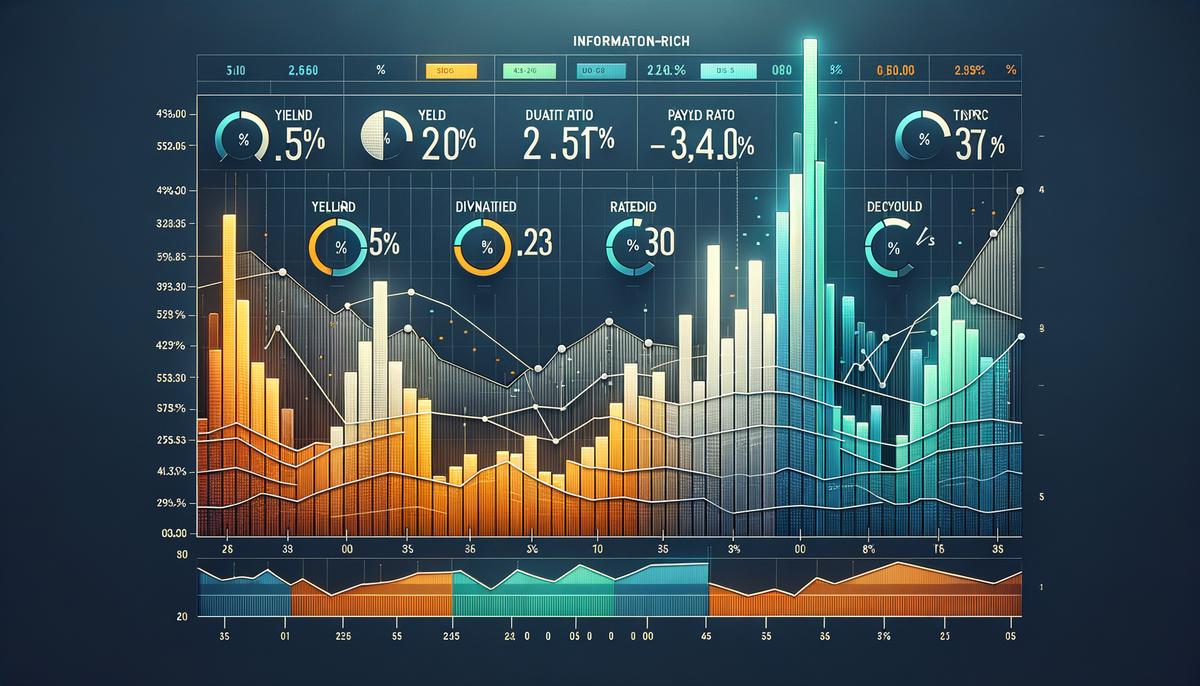Dividends are like the cool rewards companies give to their shareholders for sticking with them. It’s like getting a piece after the profits pie, and it can make a stock way more attractive. But it’s not just about the extra cash; dividends can seriously impact a stock’s value. Investors often look at things like dividend yield, payout ratio, and price-to-earnings ratio to see if a stock’s a good deal. They’re like the scorecard stats that tell you if a company’s really got game in the dividend field. We’re about to jump into the financial details that can help pick out the cheap stocks that could give you a slice of the profit pie while not skimping on growth potential.
Understanding Dividends and Stock Valuation
Dividends and Stock Valuation: The Impact Examined
When a company makes money, it has a few options on what to do with those profits. They can reinvest in the business, save it for a rainy day, or share the wealth with their stockholders in the form of dividends. But how do these dividends influence the valuation of a company’s stock? Let’s take a closer look.
First up, what is a dividend? In simple terms, it’s a payment a company makes to its shareholders, typically on a regular basis like quarterly. It’s a sign that the business is doing well enough to share its earnings, which can be attractive to investors looking for a steady income from their investments.
Now, the connection between dividends and stock valuation is quite significant. It’s like looking at a tree with fruit; the tree represents the company, and the fruit is like the dividends. If you knew a certain tree’s fruit could be counted on season after season, you might value the tree more. In the stock market, reliable dividends can increase a stock’s appeal, drawing in investors who value steady income, and potentially driving up the stock price.
But there’s more to the story than just attraction. Dividends can also give a clue into the health of a company. If dividends are high and steady, it might signal that the company is stable and confident in its financial position. On the flip side, if a company cuts dividends, it may set off alarm bells, suggesting potential trouble ahead. Investors might see this as a red flag and think twice about the stock’s value.
It’s also important to understand the Dividend Discount Model (DDM). This is a tool investors use to estimate the value of a stock based on the expected dividends and the growth rate of those dividends. Essentially, it helps investors decide if a stock is undervalued or overvalued based on future cash flow. If the DDM shows the stock is worth more than its current market price, investors might see it as a good buy.
When it comes down to it, dividends are like pieces of a puzzle in stock valuation. They give insight into a company’s profitability, financial health, and what the future might hold. Smart investors look at dividends as part of a larger picture, including how they grow over time and how sustainable they seem.
So, while dividends aren’t the only thing that matters when valuing stocks, they play a pretty important role. They’re one of the ways investors can understand a company’s story – where it’s been, where it is right now, and where it’s headed. And that’s crucial information for anyone aiming to make wise investment choices.

Screening Criteria for Cheap Stocks with Dividends
When hunting for the best cheap dividend-paying stocks, savvy investors focus on several specific criteria. These critical points of analysis help ensure that a cheap stock isn’t just a bargain, but a value-rich investment likely to deliver steady returns.
One paramount criterion is the dividend yield. It’s the annual dividend payment divided by the stock’s price. Higher yields may grab attention, but they aren’t always sustainable. Look for a sweet spot—a yield that’s attractive compared to interest rates and other dividends but not so high that it suggests the dividend might get cut.
Investors should also scrutinize the payout ratio, which compares the dividend to the company’s net income. If a company pays out most of its profits as dividends, this could leave little room for reinvestment or buffer against economic downturns. An ideal payout ratio often ranges from 30% to 60%, allowing for growth and dividend stability.
Dividend consistency is key. Companies with a history of maintaining or raising their dividends can be more appealing than those with erratic patterns. A steady history indicates financial stability and a commitment to returning value to shareholders.
Industry stability is also part of the equation. Companies operating in stable industries are better able to navigate market fluctuations and sustain dividend payments. This predictability adds to their attractiveness, as the dividends are less likely to be affected by volatile market swings.
The balance sheet speaks volumes; it’s the financial statement that outlines the company’s financial position, including assets, liabilities, and shareholders’ equity. Solid companies with plenty of assets and manageable debts reveal financial resilience, aligning with the capability to uphold dividend payments.
Lastly, it’s important to acknowledge that stocks are not just ticker symbols; they represent ownership in a business. Investors should assess the underlying business, including management quality and future prospects. A sound business model and strong leadership can propel a company’s growth and, by extension, dividend payments.
While cheap stocks with healthy dividends can be excellent additions to a portfolio, investors must exercise due diligence. Beyond numbers and ratios, understanding market contexts and business models provides invaluable insight that numbers alone cannot afford. The blend of quantitative metrics and qualitative analysis shapes a comprehensive approach to identifying the most promising cheap dividend-paying stocks for investment consideration.

Sector Analysis for Dividend Stocks
When browsing the landscape for inexpensive stocks that pay dividends, investors might benefit from casting their nets in sectors known for their financial stability and consistent demand. One promising arena is the utility sector. Utility companies, from electric to water services, typically exhibit less volatility and possess durable competitive positions due to the essential nature of their services. This translates into predictable cash flows and, consequently, the ability to distribute steady dividends.
Another sector to scout for high-dividend-yielding stocks is consumer goods, especially those in the consumer staples subcategory. Companies within this sector produce items people need regardless of economic conditions, such as food, beverages, and household products. Their products’ essential nature can provide a buffer against economic downturns, potentially leading to reliable dividend payments.
The real estate sector, particularly through Real Estate Investment Trusts (REITs), also presents opportunities for dividend-seeking investors. By law, REITs are required to distribute a significant portion of their taxable income to shareholders. This mandate can result in attractive dividend yields. Investing in REITs allows for exposure to property markets without the need to directly invest in physical real estate, and because property is a tangible asset, it may provide a hedge against inflation.
Healthcare is another sector where dividend seekers may find value. With an aging population in many countries, the demand for healthcare services and products is likely to grow, potentially leading to consistent and increasing dividends. Pharmaceutical companies, in particular, often have robust pipelines of drugs that can lead to substantial profits and, consequently, healthy dividends.
Lastly, the telecommunications sector is worth examining. In today’s connected world, the services provided by these companies have become fundamental to both individuals and businesses. Telecommunication giants frequently enjoy steady revenue streams from their expansive and oftentimes monopolistic networks, which can support stable dividends.
While exploring these sectors, investors should scrutinize key metrics like dividend yield and payout ratio, ensuring the dividends are not only high in percentage terms but also sustainable. Checking the consistency of dividends over time and assessing the company’s overall financial health, including reviewing the balance sheet, can’t be overstressed.
Investing in cheap dividend stocks within these sectors requires meticulous analysis. One must look beyond the attractive dividend headline numbers to the business fundamentals to ensure that today’s promising stock doesn’t become tomorrow’s financial mishap. With careful consideration and due diligence, the search for cheap dividend stocks in these sectors may yield fruitful investment opportunities.

Risks and Considerations
Investing in affordable dividend-paying stocks might seem like a savvy move to add income to your investment portfolio. After all, who wouldn’t want to snag a deal that not only is easy on the wallet but also generates a regular stream of cash? Before rushing to buy, it’s crucial to peek behind the curtain and ponder the possible risks. These low-cost shares may come with baggage that isn’t immediately visible on the surface.
Firstly, be wary of dividend traps. These are stocks that boast high dividend yields, which might grab your attention. However, sometimes these dividends are too good to be true. When a company’s stock price plummets, the dividend yield—a percentage of the stock price—can inflate, luring investors in. This situation often arises when a company is in trouble, and the juicy yield is masking underlying issues that can impact your investment negatively.
Another risk factor is dividend cuts or eliminations. A company may be distributing dividends regularly, but if it starts struggling financially, those dividends could be reduced or stopped entirely without warning. Such cuts usually result in a decline in the stock’s price, which could hurt your investment, particularly if you’re relying on that income.
A company that offers dividends must have the earnings to support them. If not, it may be borrowing money to keep paying out, which is unsustainable in the long run. This financial maneuvering can lead to a shaky foundation, leaving investors vulnerable if the company’s financial situation worsens.
Also, consider why a stock is cheap. It might signify an opportunity, but cheapness could also indicate serious problems within the company or industry—think declining demand, intense competition, or regulatory challenges that could hinder future profitability. Be on the lookout for signs in the company’s earnings reports and industry news that could hint at troubled waters ahead.
Checking a company’s history can provide clues to its future behavior. If its dividend payments have bounced around like a yoyo, it’s a red flag for investors searching for steady income. A history of stable or increasing dividends can provide comfort, but remember, past performance isn’t a foolproof predictor of future results.
If you invest in sectors that seem safe, like utilities or consumer staples, remember that they, too, have their own sets of risks. Regulatory changes, shifts in consumer behavior, or unforeseen events could impact these industries and the dividends you’re banking on. And when considering REITs, remember that real estate markets can fluctuate, impacting dividends and stock prices alike.
Lastly, diving into balance sheets and earnings reports is key to uncovering potential issues. Look beyond dividend yield and payout ratios; assess the company’s debt, cash flow, and earnings. Understanding the financial health and sustainability of a company can shed light on whether its low price and dividend payments are an opportunity or a siren call leading to rocky financial shores.
Investing in cheap dividend-paying stocks requires careful scrutiny and a solid understanding of the potential risks. By examining company history, financials, and industry dynamics, you’ll be better equipped to decide whether the reward outweighs the risk. Keep these insights in hand as you chart a course through the complex, yield-filled landscape of low-cost dividend stocks.

Building a Dividend-Focused Portfolio
Investing in dividend-paying stocks provides the allure of a steady income stream, but spotting the right opportunities especially when considering lower-cost options demands a keen eye. Diving into this realm, investors can employ a strategy of accumulating shares in businesses marked by promising fundamentals and consistent payouts, effectively setting the stage for a robust portfolio that thrives on dividend yields.
When filtering through the vast selection of stocks, prioritizing those with well-established and increasing dividend histories is imperative. A pattern of consistent and rising payouts signals a corporation’s resilient cash flow and management’s commitment to shareholder returns. Moreover, this consistency ensures that investors aren’t caught off-guard by dividend fluctuations which could disrupt income projections.
Additionally, investors should incline towards companies that boast manageable payout ratios. This figure, the percentage of earnings distributed as dividends, guides investors to discern whether a company’s dividends are sustainable. A payout ratio that is too high could suggest that dividends are eating into the capital needed for growth, potentially indicating financial fragility.
Industry stability cannot be underestimated when sculpting a portfolio around inexpensive dividend-rich stocks. The focus should be on sectors that have historically demonstrated resilience and predictable revenue streams. Tapping into such industries reduces the risk of dividend volatility and offers a safeguard during economic downturns.
Financial reports stand as the roadmap to understanding a company’s true state. While balance sheets unravel the narrative of a company’s fiscal solidity, income statements divulge the profitability tale. Scrutinizing these documents enables investors to decode the financial health of a business, ensuring that the attractive price tag of a stock isn’t a facade masking inherent weaknesses.
Beyond the numbers, evaluating the core business operations of a potential investment is a necessary diligence step. A strong, competitive advantage, a clear growth trajectory, or a niche market position can buttress a company against market pressures, enhancing dividend reliability. Investors should seek firms that not only navigate but thrive amidst competition, ensuring that dividends are backed by a robust business model.
In the context of cheap dividend stocks, caution is warranted. Lower-priced stocks might be victims of a dividend trap, whereby their high yields are unsustainable and may lead to drastic cuts in payouts. Thus, comprehensive analysis surpasses mere attraction to high dividend yields; it involves dissecting the reasons behind a stock’s low price.
Investors should investigate if the reduced cost is a result of industry-wide challenges or company-specific issues. Troubles such as operational inefficiencies, legal entanglements, or declining market share can erode investor confidence and, in turn, devalue a stock. By being cognizant of these potential pitfalls, investors can make informed decisions that protect their income stream and capital.
Ultimately, constructing a portfolio around cheap dividend-paying stocks is as much an art as it is a science. While the allure of high yields at low costs is palpable, the intelligent investor will marry this with a meticulous analysis of financial metrics, industry stability, and company fundamentals. It is this balanced approach that can unlock both the preservation of capital and the promise of recurring income, rewarding investors with a fortified fortress of dividend-bearing securities.

Getting into the groove of investing in dividend-paying stocks that are easy on the wallet takes some smarts, but it’s not rocket science. It’s about finding that sweet spot between a company that’s priced just right and one that’s ready to hand out a steady stream of dividend dough. A portfolio that focuses on these stocks can be pretty solid, especially if it’s mixed up with a few high-growth players to spice things up. Remember, it’s all about that balance and keeping your eyes on the prize—steady dividends and the chance for your investments to grow. With the right mix, your money could be working just as hard as you are, maybe even harder!



